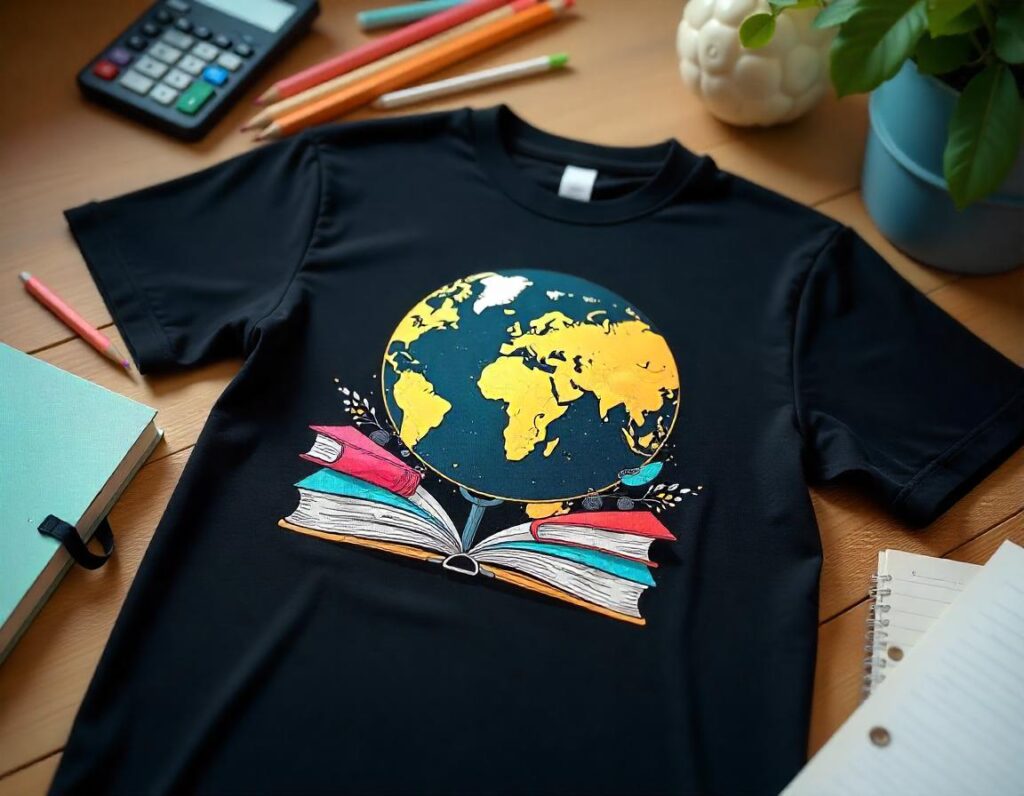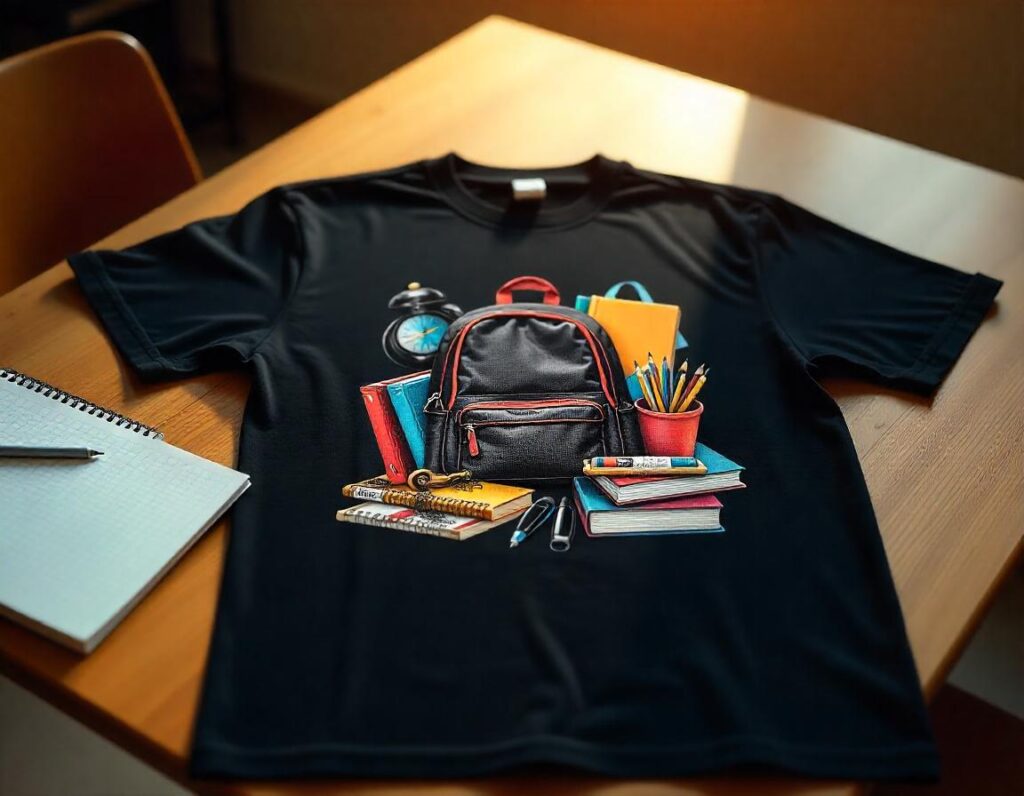DTF supplies are the backbone of the innovative Direct to Film (DTF) printing process, transforming the garment industry with their unmatched durability and vibrant colors. Mastering the setup of these essential supplies is crucial for anyone looking to succeed in DTF printing. With the right DTF transfer film and DTF inks, you can achieve stunning results that captivate customers and elevate your business. In this guide, we will walk you through everything you need to know about setting up DTF supplies effectively, ensuring your printing setup meets professional standards. Get ready to dive into the exciting world of DTF printing and learn how to optimize your workflow for impressive, high-quality prints.
When it comes to garment printing, understanding the components required for a Direct to Film (DTF) printing operation is vital. This advanced printing technique, involving careful preparation and application of specialized transfer materials, can elevate your designs significantly. The arsenal of tools you will need includes not only a dedicated printer but also high-quality inks and films that guarantee enduring prints. In this exploration of DTF materials, we will delve into the nuances of the printing setup and provide helpful insights to streamline your process. By mastering these supplies, you’ll be well on your way to crafting visually striking prints that stand out in the marketplace.
Understanding DTF Printing Supplies
DTF printing stands out for its innovative approach to garment decoration, requiring specific supplies to achieve optimal results. Among these, the DTF printer is a vital component, tailored explicitly for the DTF process. It uses water-based inks that ensure bright and durable finishes while maintaining flexibility on garments. Recognizing the key role of DTF inks in achieving vibrant colors helps in grasping the significance of selecting quality products that work seamlessly together.
Another critical supply is the DTF transfer film, which is engineered to accurately bond the printed design to the fabric. This film is specially formulated to handle high temperatures and pressures without losing integrity, ensuring that both intricate designs and bold graphics are transferred with precision. By understanding these supplies, you can better navigate the setup process that leads to quality outputs.
Setting Up DTF Supplies: A Comprehensive Guide
To set up your DTF supplies effectively, begin with your printer configuration. Unbox your DTF printer and follow the installation guidelines provided by the manufacturer meticulously. This includes installing the printheads and connecting the printer to your computer. A critical part of this setup is ensuring that your printer is properly calibrated; this includes setting the right color profile and aligning the print heads to ensure consistent ink application.
Next, ensure that you accurately load the DTF inks into the printer, as incorrect loading could lead to clogs that disrupt printing. Referencing the manufacturer’s instructions is highly recommended as it guides you through avoiding common problems and ensuring smooth ink flow. This focus on details during the setup phase lays the groundwork for achieving the highest quality prints in your DTF printing projects.
Essential Steps in DTF Printing Setup
The initial step in your DTF printing setup requires you to prepare the DTF transfer film. It’s essential to load the film correctly into your printer. Adjust your printer settings according to the type of film, as different products may require unique resolution or ink density settings. This adjustment is vital in ensuring that your prints turn out crisp and clear, ultimately affecting the overall quality of the transferred image.
After you’ve printed your designs onto the film, it’s crucial to apply the adhesive powder while the inks are still wet. This step must be done with care to ensure even coverage, allowing for proper bonding during the heat transfer process. Using a high-quality adhesive powder can significantly improve the durability and vibrancy of the final print on fabric.
The Importance of Curing in DTF Printing
Curing the adhesive is a critical step in the DTF process that ensures the best outcomes for your printed films. Utilizing a curing oven or a heat press, you must adhere to the recommended temperature and time as specified by the adhesive powder manufacturer. Typically, curing occurs at around 160°C for 1 to 2 minutes, but this can vary based on specific product requirements.
Proper curing enhances the stickiness of the adhesive and guarantees that the print will adhere effectively to the fabric during the transfer. Neglecting this step can lead to poor transfer quality, resulting in designs that peel or fade prematurely. Therefore, paying close attention to this process will ensure that your DTF prints maintain their quality over time.
Best Practices for Long-Lasting DTF Success
To achieve success with your DTF printing, it is critical to choose only the highest quality DTF supplies. This includes inks, transfer films, and adhesive powders from reputable vendors. By using quality materials, you ensure better adhesion, vibrant colors, and enhanced durability of your prints on garments, which is essential for customer satisfaction.
Moreover, regular maintenance of your printer and supplies cannot be overstated. Scheduling routine cleanings and checking for potential clogs in your DTF printer prevent costly interruptions. This maintenance helps in preserving optimal function, leading to consistent quality in every print job. Additionally, conducting testing on various fabrics will allow you to refine the settings for different materials, ensuring your prints meet the highest standards.
Troubleshooting Common DTF Printing Issues
Even with the best setup, issues can arise during DTF printing. One common problem is ink clogging in the printer, which can be prevented by regular maintenance and keeping an eye on ink supply levels. When using DTF inks, ensure that they are correctly loaded and that there are no air bubbles in the ink lines, which can cause uneven printing or color discrepancies.
In addition to ink problems, the transfer process itself can create issues if done incorrectly. For instance, if the temperature or time during the heat press isn’t adequately managed, designs might not adhere properly. Conducting thorough tests and practicing proper techniques not only mitigates these issues but also enhances your skill and efficiency with DTF printing, resulting in high-quality outputs.
Frequently Asked Questions
What are the essential DTF supplies needed for effective DTF printing setup?
The essential DTF supplies for a successful DTF printing setup include a DTF printer, DTF transfer film, DTF inks, adhesive powder, and a curing oven. These components work together to ensure the best print quality and durability.
How do I properly set up my DTF supplies for printing?
To properly set up your DTF supplies for printing, begin by configuring your DTF printer, loading the DTF inks, preparing the DTF transfer film, executing the printing process, applying adhesive powder, and curing the print. Each of these steps is crucial for optimal print results.
What is the role of DTF transfer film in the DTF printing process?
DTF transfer film plays a crucial role in the DTF printing process by providing a surface for printing designs and ensuring that the inks adhere correctly. It allows for high-quality transfers with vibrant colors and durable prints on fabrics.
Why is it important to use DTF inks in my DTF printing setup?
Using DTF inks specifically designed for DTF printing is important because they are formulated to bond effectively with the DTF transfer film and ensure high-quality output. Using the wrong inks can lead to poor print quality and adhesion issues.
What best practices should I follow when setting up DTF supplies?
Best practices for setting up DTF supplies include choosing quality materials, performing regular maintenance on your printer, conducting test prints on different fabrics, and following manufacturer guidelines closely for each component to ensure successful results.
How can I ensure the adhesion of my DTF prints to fabric during transfer?
To ensure proper adhesion of DTF prints to fabric, apply adhesive powder evenly while the printed inks are still wet, and use a heat press to cure the adhesive at the correct temperature and time. This process helps bond the print effectively during the transfer.
| Key Point | Description |
|---|---|
| DTF Printer | A specialized printer that supports DTF printing with water-based inks. |
| DTF Transfer Film | Critical for transferring designs onto fabrics, ensuring clarity and ink bonding. |
| DTF Inks | Water-based inks specifically formulated for DTF processes to achieve high-quality output. |
| Adhesive Powder | Heat-resistant powder that bonds the printed image to the fabric during transfer. |
| Curing Oven | Ensures effective adhesive powder curing for proper transfer to fabric. |
Summary
DTF supplies are essential for achieving high-quality prints in the Direct to Film printing process. By properly setting up your DTF supplies, including the printer, transfer film, inks, adhesive powder, and curing oven, you not only enhance the quality of your prints but also streamline your printing workflow. Following structured steps and best practices will ensure that your prints adhere well and showcase vibrant colors, meeting customer expectations. Investing in quality DTF supplies, maintaining your equipment, and experimenting with different materials will further bolster your success in the garment printing industry.



